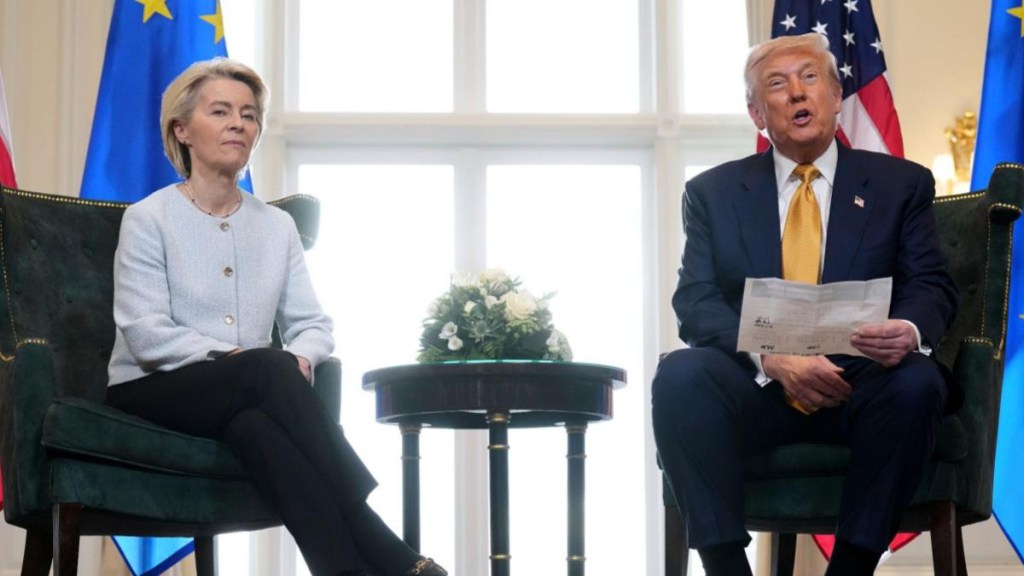Following months of tense negotiations, the United States and the European Union reached a trade agreement on Sunday. The deal includes a 15% tariff on most goods, including cars and significant European investments in American energy and military equipment.
The agreement was announced by President Donald Trump and European Commission President Ursula von der Leyen following a high-stakes meeting at Trump’s golf resort near Turnberry, Scotland.
“We made it,” Trump declared, calling the deal “great for both parties”. Von der Leyen described it as a step to “rebalance, but enable trade on both sides”.
“I think this is the biggest deal ever made,” Trump told reporters, lauding EU plans to invest some $600 billion in the United States and dramatically increase its purchases of US energy and military equipment.
Close to the deadline
The accord comes just days before a Trump administration deadline to impose tariffs on EU goods. While earlier talks this month hinted at progress, Trump raised tensions by abruptly floating a harsher 30% tariff rate.
Under the new framework, the EU has committed to increase purchases of American liquefied natural gas and defense products. In exchange, the US agreed to moderate its tariff plans and open further talks on reducing regulatory barriers.
Trump trade deals
Trump, who has aimed to reshape the global trade landscape and slash long-standing US trade deficits, has used tariffs as a key negotiating tool. Of late, the US President has threatened steep duties on several of its trading partners.
So far, Trump has secured deals with countries like Britain, Japan, Indonesia and Vietnam. However, his administration fell short of its pledge to strike “90 deals in 90 days”.
Trump has frequently criticised the European Union, once claiming it was “formed to screw the United States” on trade. His primary grievance remains the US goods trade deficit with the EU, which ballooned to $235 billion in 2024. In response, EU officials often highlight the sizable US surplus in services, which they argue offsets part of the trade imbalance.
(With inputs from Reuters)
